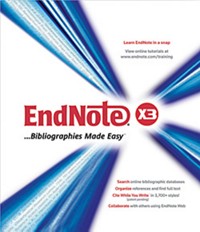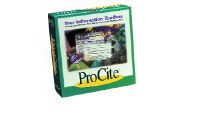Advertisement
Grab your lab coat. Let's get started
Welcome!
Welcome!
Create an account below to get 6 C&EN articles per month, receive newsletters and more - all free.
It seems this is your first time logging in online. Please enter the following information to continue.
As an ACS member you automatically get access to this site. All we need is few more details to create your reading experience.
Not you? Sign in with a different account.
Not you? Sign in with a different account.
ERROR 1
ERROR 1
ERROR 2
ERROR 2
ERROR 2
ERROR 2
ERROR 2
Password and Confirm password must match.
If you have an ACS member number, please enter it here so we can link this account to your membership. (optional)
ERROR 2
ACS values your privacy. By submitting your information, you are gaining access to C&EN and subscribing to our weekly newsletter. We use the information you provide to make your reading experience better, and we will never sell your data to third party members.
Policy
Digital Briefs
New software and Websites for the Chemical Enterprise
by Lauren K. Wolf
July 13, 2009
| A version of this story appeared in
Volume 87, Issue 28
Website
VIPEr (the Virtual Inorganic Pedagogical Electronic Resource) is a website established by a community of inorganic chemists to facilitate the sharing of teaching tools and knowledge among those in the field (J. Chem. Educ. 2009, 86, 766). Launched in 2008, the interactive site enables users to post and access "learning objects" such as suggested classroom and laboratory activities, literature discussions, and potential exam questions. As faculty try these tools, they can post assessments and results, enabling collaborative modification of the educational modules with other users. Faculty must register on the website to gain access to posts involving exam problems, which are blocked from viewing by a general audience. VIPEr also integrates social-networking tools such as a discussion forum, polls, and a resource-rating system. Currently, this online library of teaching materials boasts more than 100 learning objects and has some 300 registered users. The group that maintains VIPEr, the Interactive Online Network of Inorganic Chemists (IONiC), encourages users to check out the site with its motto: "Come for the content, stay for the community!" VIPEr is funded by the Andrew W. Mellon Foundation, the National Science Foundation, and the National Institute for Technology & Liberal Education.
IONiC, www.ionicviper.org
Software
PyRx, developed in the Molecular Graphics Laboratory at Scripps Research Institute, is open-access software for screening libraries of compounds against potential drug targets. Combining a graphical user interface with Scripps's AutoDock suite of automated docking tools, PyRx helps prepare structural data for job submission and makes it possible to analyze, store, and retrieve calculated results easily. At the end of each virtual screening session, binding energies obtained from a simulation can be sorted, filtered, and saved in a comma-separated value (csv) file for import into a spreadsheet. PyRx is not limited to local use via Linux; the software is portable when run in Mac or Windows with the Opal Web Services Toolkit, a cloud-computing interface developed by the National Biomedical Computation Resource.
Scripps Research Institute, mgldev.scripps.edu/PyRx
For chemists working in drug discovery, La Jolla, Calif.-based Molsoft released its desktop cheminformatic software, ICM Chemist Pro, late last year. The product features the ICM Interactive 3D Ligand Editor, a tool that allows users to design, dock, and optimize drug candidates, all while visualizing the work three-dimensionally. At the start of a ligand-editor session, users can display the crystal structure of the initial receptor-ligand complex, as well as the receptor's solvent-accessible surface area, the binding pocket (shown above), and hydrogen bonds. Then, chemists can interactively edit the ligand in 3-D with a full panel of chemical groups, linkers, and bond types. After the software calculates a new binding energy and bond interactions for the modified ligand and displays them on screen, it allows users to save the information in a single file to share with other researchers. For scientists who need to present 3-D data generated by the ligand editor in platforms such as PowerPoint and on Web pages, Molsoft's ICM Browser and ActiveICM plug-in are freely available for download from the company's website.
Molsoft, www.molsoft.com
Released in early July, NoteBookMaker v10.0 is a major upgrade to software firm NoteBookMaker's virtual electronic laboratory notebook system. Designed for laboratory and engineering workgroups, the new version includes online storage of notebook pages through SaaS, a Web service with access to the Amazon cloud. Users can also deploy the notebook system as a stand-alone application on a flash drive or over a local area network (LAN). To ensure protection of intellectual property and vital data, NoteBookMaker features a virtual librarian that restricts the personnel allowed to search and browse completed pages. For this, a system administrator assigns users unique library cards that contain identifying information (shown). ACS members can go to the firm's website for a free license of the fully functioning single-user runtime edition of NoteBookMaker. A 10% discount on network editions is also available to society members.
NoteBookMaker, www.notebookmaker.com
Lauren K. Wolf writes Digital Briefs. Information about new or revised electronic products can be sent to d-briefs@acs.org.








Join the conversation
Contact the reporter
Submit a Letter to the Editor for publication
Engage with us on Twitter